The arrival of spring also meant that breaking ground in our display gardens could finally take place. The snow had melted, the rains had eased, and we were able to make some real progress. While still in our Landscape Construction class at the end of March, we took advantage of one chilly but dry day to mark out construction lines on the ground. Our instructor, Dan, worked with us as each team measured, staked, and marked out the hardscape areas in our plots. Once the areas were marked, excavation could begin (when the weather chose to cooperate, which it didn't).
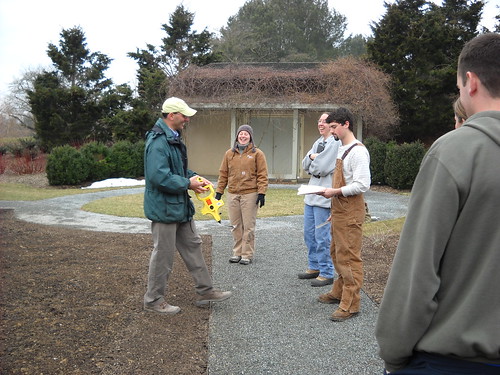 Once the construction of the space was complete, each plot was graded and a ribbon of mulch laid around the perimeter to prevent soil from running off. This is our plot, ready for marking. Take note of the deciduous shrubs to the right.
Once the construction of the space was complete, each plot was graded and a ribbon of mulch laid around the perimeter to prevent soil from running off. This is our plot, ready for marking. Take note of the deciduous shrubs to the right. Alterations in the drawing from the copy machine and ever-so-scanty changes in the dimensions of the actual site may require some adjustment of the design to fit the space. Some of our classmates had discrepancies of several inches that they had to deal with. We were lucky - our measurements differed by a whopping half-inch!
Alterations in the drawing from the copy machine and ever-so-scanty changes in the dimensions of the actual site may require some adjustment of the design to fit the space. Some of our classmates had discrepancies of several inches that they had to deal with. We were lucky - our measurements differed by a whopping half-inch!
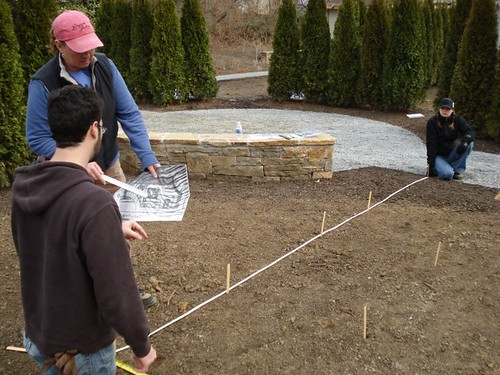
Here all the lines have been drawn and the hardscape areas begin to take on life and form.
 In even high-pressure situations it's good to have some levity!
In even high-pressure situations it's good to have some levity!
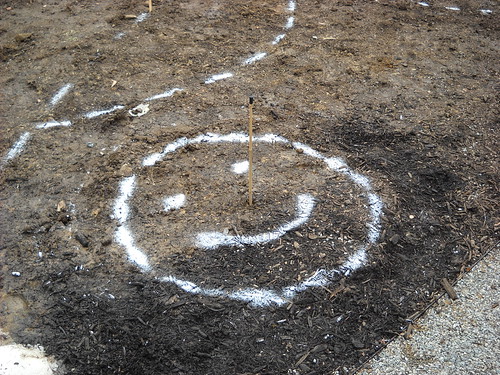 The next step was to excavate the hardscape areas, install the steel edging, geotextile (otherwise known as weed-barrier fabric), and gravel. Ours is the only design of the four that doesn't have a path through the garden; we designed ours with step-in areas instead, so the visitors will still be able to interact with the garden without actually walking through it. For this reason we chose to use the same gravel as the existing path, which is sold in the trade as "rice chips". Remember those shrubs? They're Viburnum, now in full bloom!
The next step was to excavate the hardscape areas, install the steel edging, geotextile (otherwise known as weed-barrier fabric), and gravel. Ours is the only design of the four that doesn't have a path through the garden; we designed ours with step-in areas instead, so the visitors will still be able to interact with the garden without actually walking through it. For this reason we chose to use the same gravel as the existing path, which is sold in the trade as "rice chips". Remember those shrubs? They're Viburnum, now in full bloom!
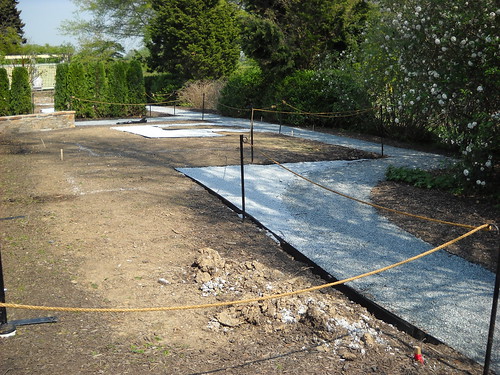
In a permanent garden, a path or step-in area such as ours would be excavated much deeper than our shallow 3" and built with a base layer under the gravel. Since these gardens are temporary and will be dismantled in about six months, we're able to get away with a few short cuts. We did go deeper than 3" since the edging measures about 5" in width, backfilled a bit and raked it smooth, then cut the geotextile to fit, poured in the gravel and voila!

With the hardscape complete, the next step is installing our hard goods elements. We're having some arches custom built, and are in the process of procuring the other elements from commercial suppliers. Following that step, we can begin planting! Landscaping on the east coast is so different from what I'm used to on the west - when our first shipment of plants arrived (Calamintha 'White Cloud') I helped off-load them and was somewhat shocked to see 62 pots with nothing but sticks sticking out! We gave them a cozy home in the student greenhouse and they came to life - to my relief - very quickly!
With a self-imposed installation deadline of May 15, we have just a few more weeks of work. The goal is to have the gardens installed at least two weeks before we depart for Spain. While we're gone, the Class of 2011 will oversee maintenance of the gardens. Next year it'll be their turn to mentor and teach the new Class of 2012 when the process starts all over again!
This project isn't just about building a display garden, though. We were also involved in the process of giving the entire space a name. In class we took an hour or so to brainstorm ideas to submit to the marketing folks. As we called out words and phrases that popped up in our minds, Dan wrote them on the board.

I know I am!
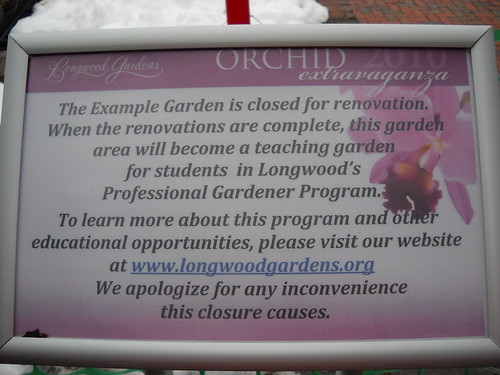




No comments:
Post a Comment